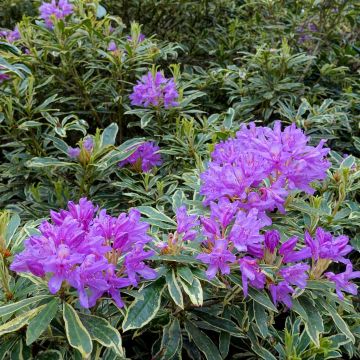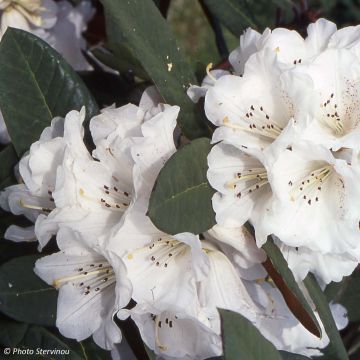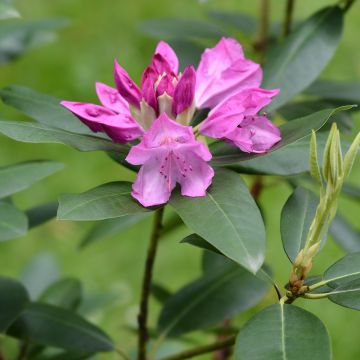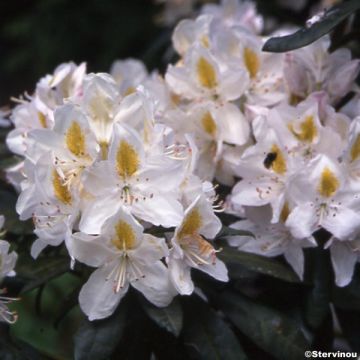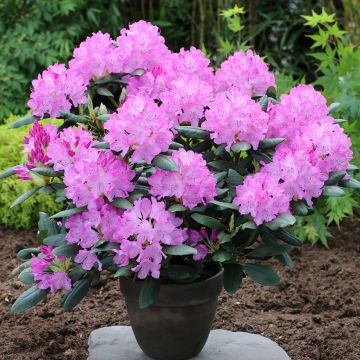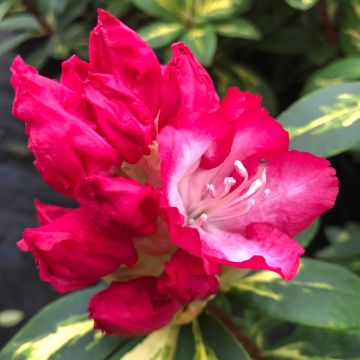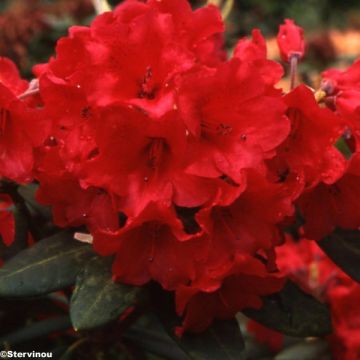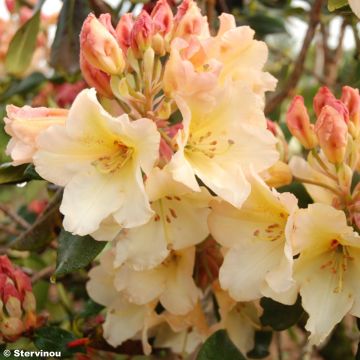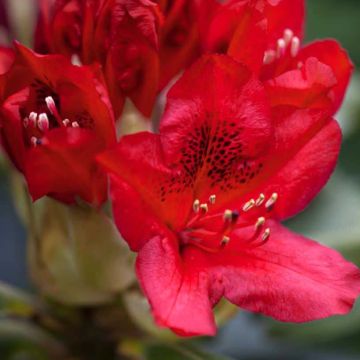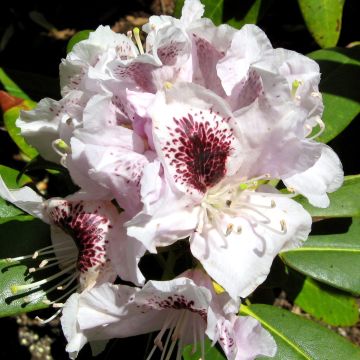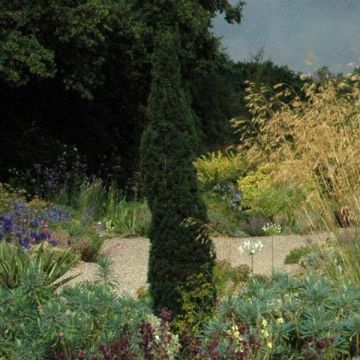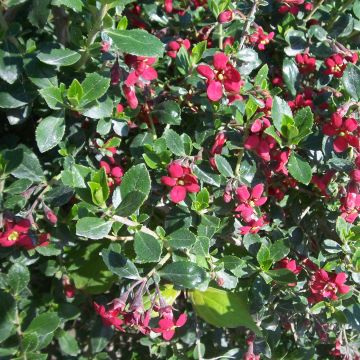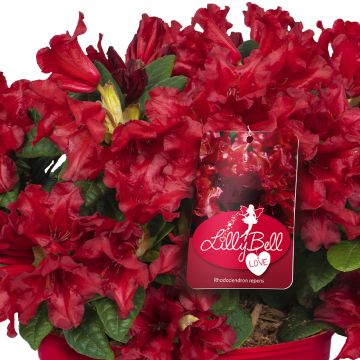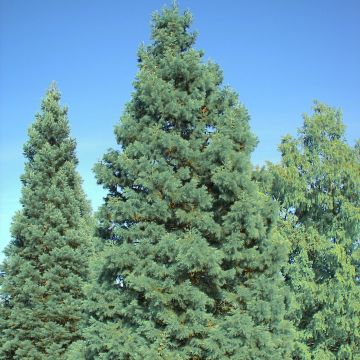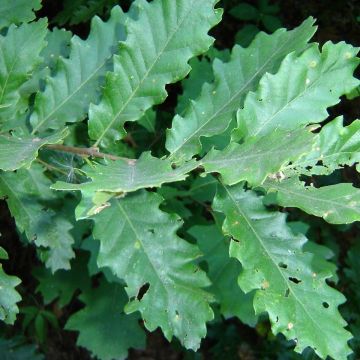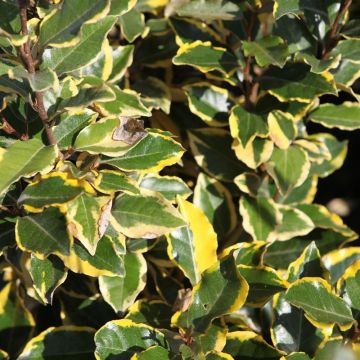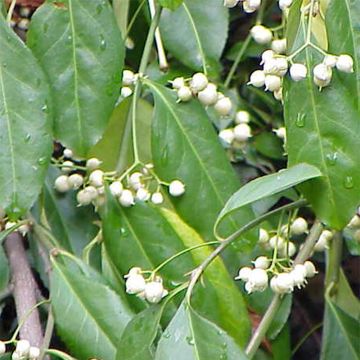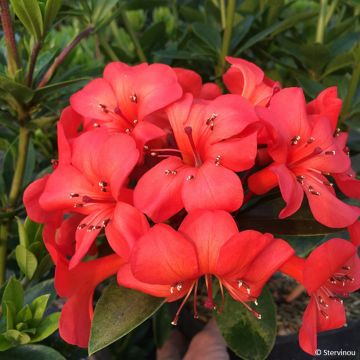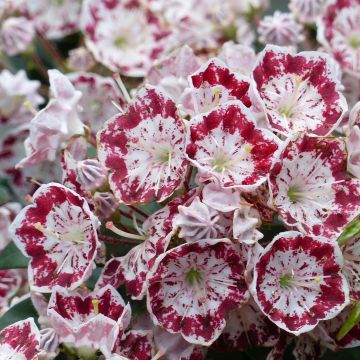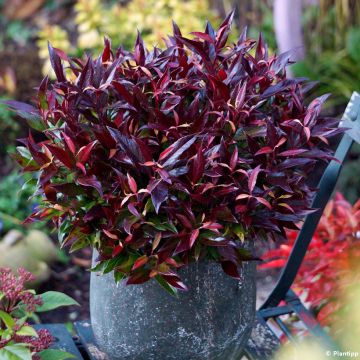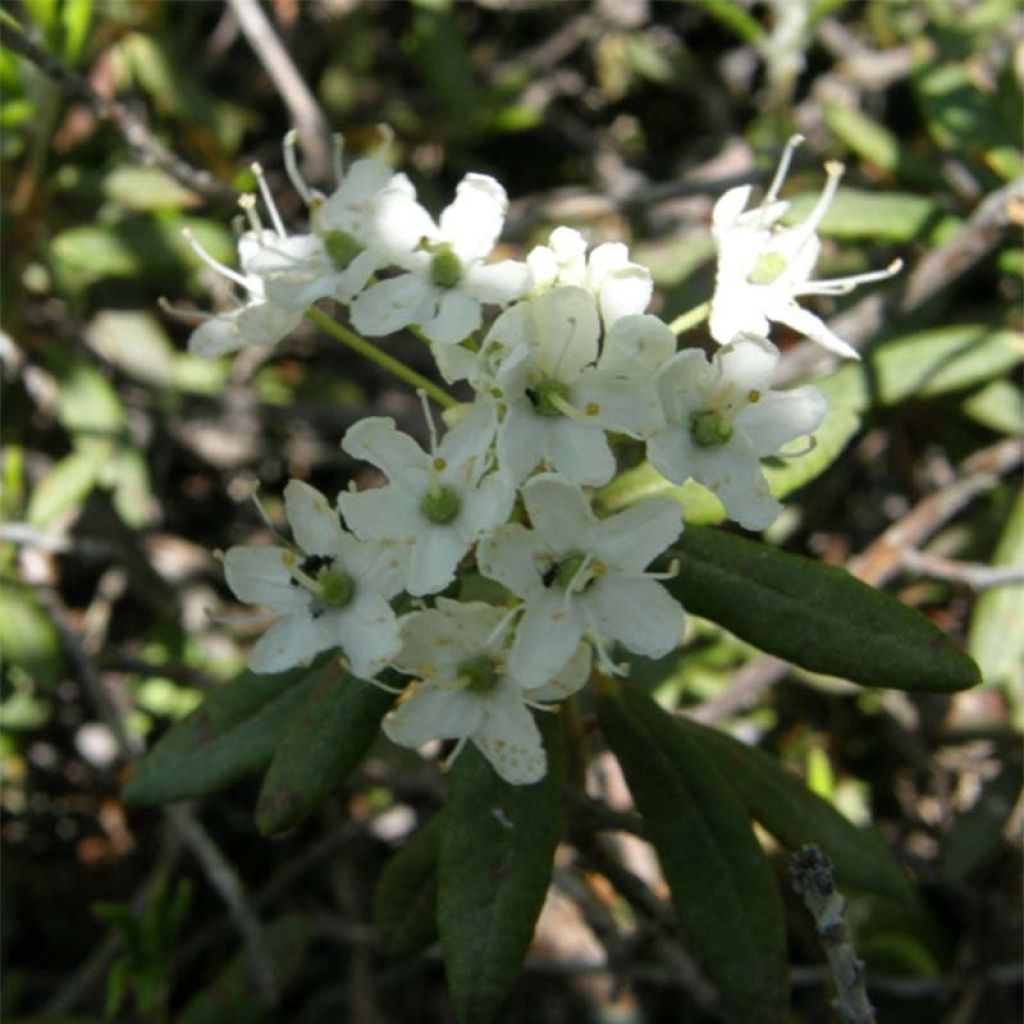

Rhododendron groenlandicum Helma
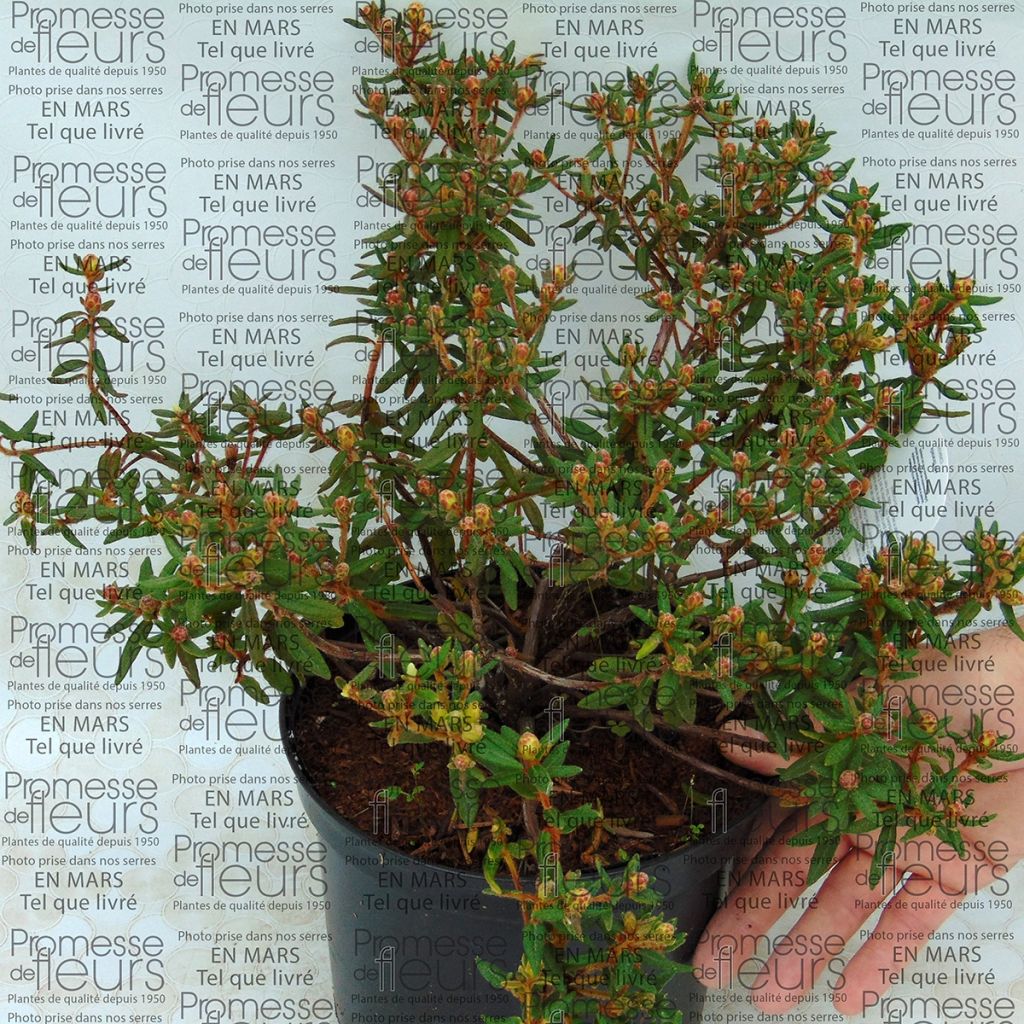

Rhododendron groenlandicum Helma
Rhododendron groenlandicum Helma
Ledum groenlandicum Helma
Bog Labrador Tea, Greenland Ledum, Muskeg Tea, Trapper's Tea
This item cannot be shipped to the selected country
Delivery charge from €5.90
More information
Schedule delivery date,
and select date in basket
This plant carries a 24 months recovery warranty
More information
We guarantee the quality of our plants for a full growing cycle, and will replace at our expense any plant that fails to recover under normal climatic and planting conditions.
From €5.90 for pickup delivery and €6.90 for home delivery
Express home delivery from €8.90.

Does this plant fit my garden?
Set up your Plantfit profile →
Description
Ledum groenlandicum 'Helma' is a variety of Labrador Tea selected for its abundant flowering. This evergreen subshrub, related to rhododendrons, is a beautiful improvement on this medicinal and aromatic plant well-known among the Eskimos and Native American peoples, and also known as Greenland Ledum. It is appreciated for its beautiful and abundant white and fragrant spring flowering of very full corymbs, and more numerous than in the type species. In the garden this cold climate plant will thrive in acidic soil, preferably moist to damp, in a partially shaded site, for example in coniferous undergrowth.
The Greenland Ledum belongs to the Ericaceae family, like heathers, azaleas and blueberries. It has now been renamed Rhododendron groenlandicum Helma. The wild species from which it is derived is native to a large geographical area in the north of the American continent, from Greenland to Alaska, and is also present in most of the Canadian territory. It is a small bush fond of acidic soils like heather, turf bogs and the humus of coniferous undergrowth, always more or less moist to damp. It can also be found on shaded rocky slopes.
The 'Helma' variety, very floriferous, slowly forms a low and rounded bush with an erect habit, generally not exceeding 80 cm (31 in) in height or 1 m (3 ft) in width. In good growing conditions it can reach 1.50 m (5 ft) in all directions. The foliage, evergreen, is composed of small alternate, single, elliptical to elongated leaves, fairly tough, whose edge is curled towards the underside. The lamina is quite dark and shiny green on top, the underside being covered with a thick down of pale green on the young leaves, turning rust on the mature leaves. These leaves, practically non-decomposable, contain a precious essential oil much used in modern aromatherapy when they are young, whose virtues were already known to the first inhabitants of the northern United States. Flowering takes place in spring, usually in May, in the form of numerous terminal almost spherical umbels, 4 to 5 cm (1.6 to 2 in) in diameter, composed of small white flowers 1 to 2 cm (0.4 to 0.8 in) in diameter with slightly prominent stamens.
An ornamental and medicinal plant, Labrador Tea 'Helma' will enjoy moist and shaded ericaceous beds, along with evergreen azaleas, Leucothoe and camellias. It will settle into a border under large conifers or on the edge of an evergreen grove, provided that the soil is always moist. If you have a water feature with sandy and peaty banks, Rhododendron groenlandicum Helma will thrive there without asking for much maintenance, together with Acorus, horsetail, carex, Iris kaempferi ensata or louisiana.
Properties:
The essential oil of Greenland Ledum has antibiotic, decongestive, antiseptic, antispasmodic, anti-inflammatory, antibacterial, analgesic (and potentially anti-tumor according to recent studies) properties. The native peoples of the northern United States smoked its leaves like tobacco and made a tea with its leaves, just like the first settlers who used it as a substitute for tea.
Report an error about the product description
Rhododendron groenlandicum Helma in pictures
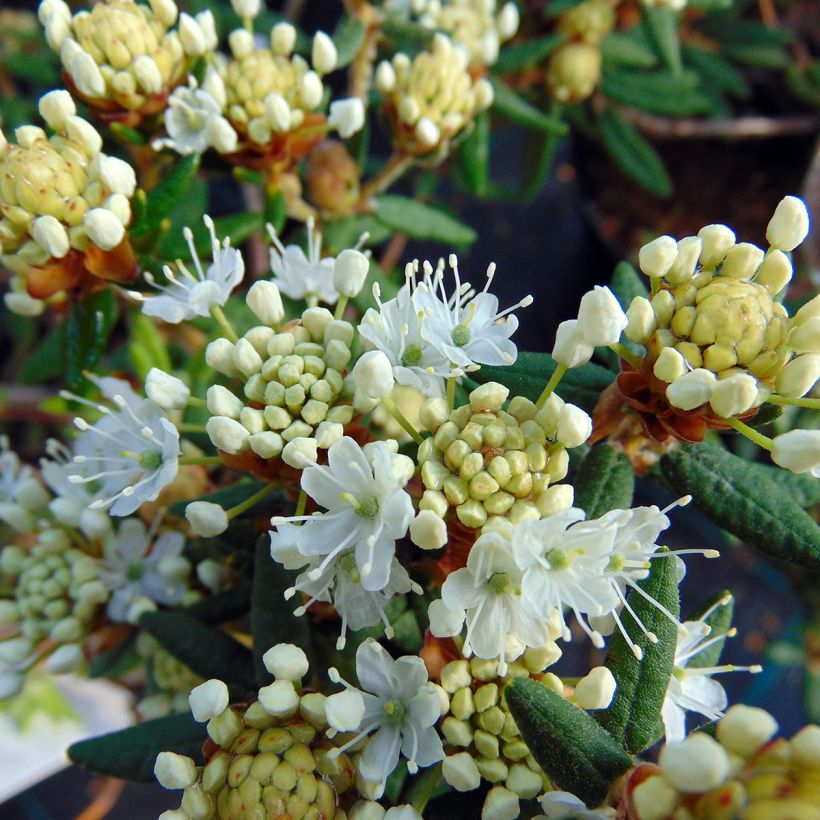

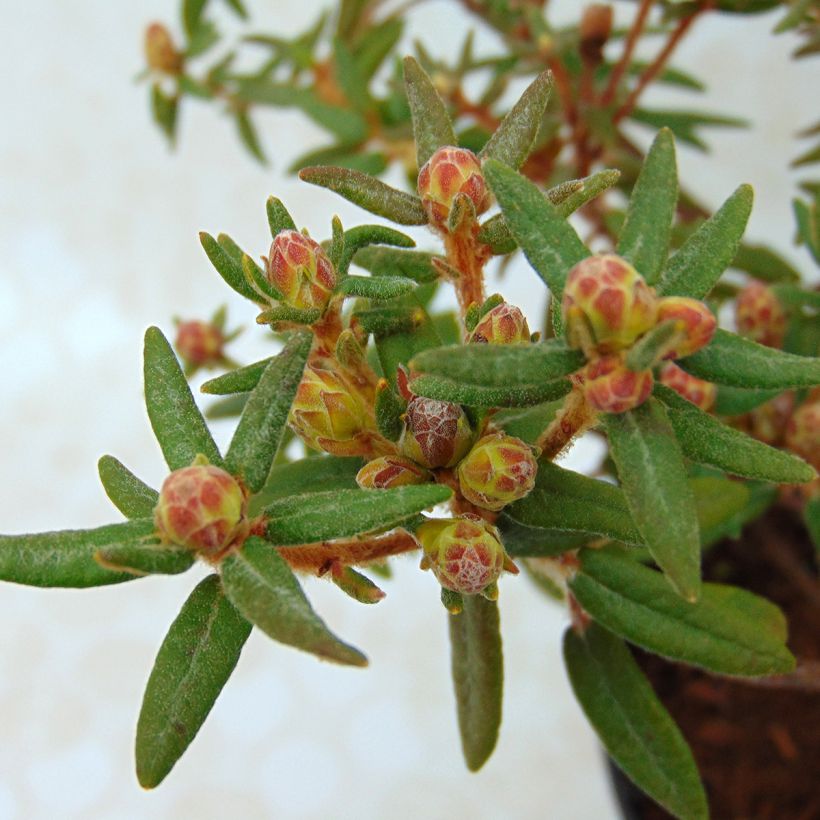

Plant habit
Flowering
Foliage
Botanical data
Ledum
groenlandicum
Helma
Ericaceae
Bog Labrador Tea, Greenland Ledum, Muskeg Tea, Trapper's Tea
Cultivar or hybrid
Other Large Rhododendrons
Planting and care
Plant Rhododendron groenlandicum 'Helma' in a shaded or semi-shaded site, in moist to damp, humus-rich, sandy or peaty, acidic soil, free of lime. Like all ericaceous plants it does not tolerate alkaline soils, but it can withstand intense cold and damp soils in winter. This bush prefers humidity but also adapts to well-drained soils if it is not exposed to direct sunlight. In the garden, it will often be necessary to add sphagnum moss to sandy soils, while in clay soil it will be appropriate to add sand. Dig a hole three times the volume of the pot. Soak the root ball in (non-chalky) water and plant the bush at the root collar level, in a mix composed of 1/4 each of wood fibre, leaf compost, gravel or coarse sand, and garden soil. Water generously and keep the soil moist in summer. Rhododendrons have a limited root system; as a result, they fear long periods of drought. That's why a humus-enriched soil and abundant watering during dry periods are recommended. Moreover, this root system is not very strong, hence it is essential to lighten heavy soils with draining materials (non-lime gravel, coarse sand, clay balls) at planting. Arrange a mulch of crushed pine bark at the foot of the bush every spring to keep the soil moist while maintaining an acidic pH. Maintenance involves cutting off the faded flowers in summer and cleaning its dead branches.
Azaleas and Rhododendrons can sometimes be attacked by vine weevils that eat the edges of the leaves and the rootlets, as well as by the famous "rhododendron tiger" which does not often cause severe damage. However, you can treat with carbofuran. Leaf yellowing (chlorosis) in Rhododendron indicates poor iron assimilation in the soil and causes premature death of the young plant. While soil alkalinity is often the cause, poorly drained soil or a deeply planted root ball can also explain the phenomenon.
Planting period
Intended location
Care
-
, onOrder confirmed
Reply from on Promesse de fleurs
Evergreen shrubs
Haven't found what you were looking for?
Hardiness is the lowest winter temperature a plant can endure without suffering serious damage or even dying. However, hardiness is affected by location (a sheltered area, such as a patio), protection (winter cover) and soil type (hardiness is improved by well-drained soil).

Photo Sharing Terms & Conditions
In order to encourage gardeners to interact and share their experiences, Promesse de fleurs offers various media enabling content to be uploaded onto its Site - in particular via the ‘Photo sharing’ module.
The User agrees to refrain from:
- Posting any content that is illegal, prejudicial, insulting, racist, inciteful to hatred, revisionist, contrary to public decency, that infringes on privacy or on the privacy rights of third parties, in particular the publicity rights of persons and goods, intellectual property rights, or the right to privacy.
- Submitting content on behalf of a third party;
- Impersonate the identity of a third party and/or publish any personal information about a third party;
In general, the User undertakes to refrain from any unethical behaviour.
All Content (in particular text, comments, files, images, photos, videos, creative works, etc.), which may be subject to property or intellectual property rights, image or other private rights, shall remain the property of the User, subject to the limited rights granted by the terms of the licence granted by Promesse de fleurs as stated below. Users are at liberty to publish or not to publish such Content on the Site, notably via the ‘Photo Sharing’ facility, and accept that this Content shall be made public and freely accessible, notably on the Internet.
Users further acknowledge, undertake to have ,and guarantee that they hold all necessary rights and permissions to publish such material on the Site, in particular with regard to the legislation in force pertaining to any privacy, property, intellectual property, image, or contractual rights, or rights of any other nature. By publishing such Content on the Site, Users acknowledge accepting full liability as publishers of the Content within the meaning of the law, and grant Promesse de fleurs, free of charge, an inclusive, worldwide licence for the said Content for the entire duration of its publication, including all reproduction, representation, up/downloading, displaying, performing, transmission, and storage rights.
Users also grant permission for their name to be linked to the Content and accept that this link may not always be made available.
By engaging in posting material, Users consent to their Content becoming automatically accessible on the Internet, in particular on other sites and/or blogs and/or web pages of the Promesse de fleurs site, including in particular social pages and the Promesse de fleurs catalogue.
Users may secure the removal of entrusted content free of charge by issuing a simple request via our contact form.
The flowering period indicated on our website applies to countries and regions located in USDA zone 8 (France, the United Kingdom, Ireland, the Netherlands, etc.)
It will vary according to where you live:
- In zones 9 to 10 (Italy, Spain, Greece, etc.), flowering will occur about 2 to 4 weeks earlier.
- In zones 6 to 7 (Germany, Poland, Slovenia, and lower mountainous regions), flowering will be delayed by 2 to 3 weeks.
- In zone 5 (Central Europe, Scandinavia), blooming will be delayed by 3 to 5 weeks.
In temperate climates, pruning of spring-flowering shrubs (forsythia, spireas, etc.) should be done just after flowering.
Pruning of summer-flowering shrubs (Indian Lilac, Perovskia, etc.) can be done in winter or spring.
In cold regions as well as with frost-sensitive plants, avoid pruning too early when severe frosts may still occur.
The planting period indicated on our website applies to countries and regions located in USDA zone 8 (France, United Kingdom, Ireland, Netherlands).
It will vary according to where you live:
- In Mediterranean zones (Marseille, Madrid, Milan, etc.), autumn and winter are the best planting periods.
- In continental zones (Strasbourg, Munich, Vienna, etc.), delay planting by 2 to 3 weeks in spring and bring it forward by 2 to 4 weeks in autumn.
- In mountainous regions (the Alps, Pyrenees, Carpathians, etc.), it is best to plant in late spring (May-June) or late summer (August-September).
The harvesting period indicated on our website applies to countries and regions in USDA zone 8 (France, England, Ireland, the Netherlands).
In colder areas (Scandinavia, Poland, Austria...) fruit and vegetable harvests are likely to be delayed by 3-4 weeks.
In warmer areas (Italy, Spain, Greece, etc.), harvesting will probably take place earlier, depending on weather conditions.
The sowing periods indicated on our website apply to countries and regions within USDA Zone 8 (France, UK, Ireland, Netherlands).
In colder areas (Scandinavia, Poland, Austria...), delay any outdoor sowing by 3-4 weeks, or sow under glass.
In warmer climes (Italy, Spain, Greece, etc.), bring outdoor sowing forward by a few weeks.

































